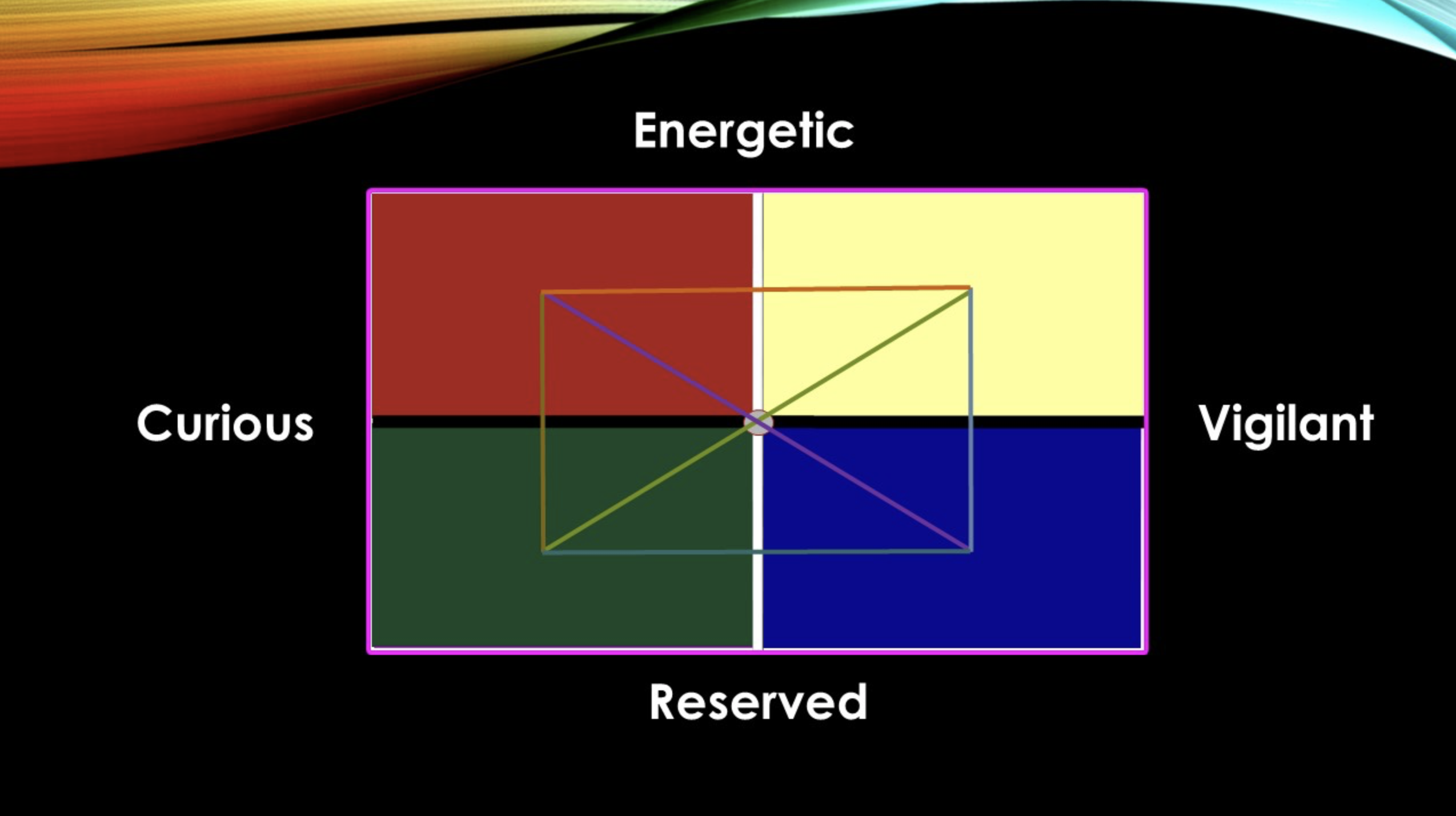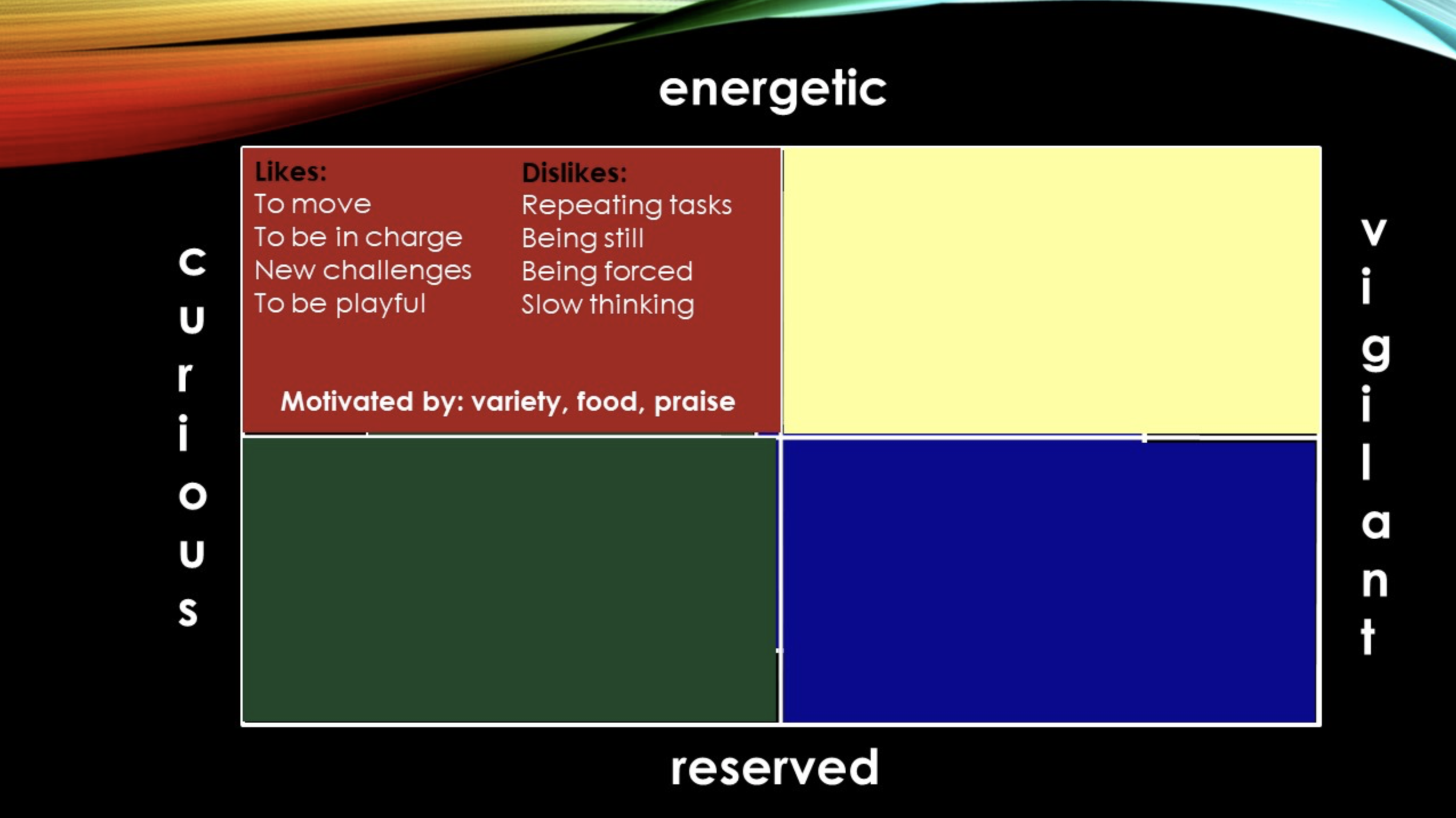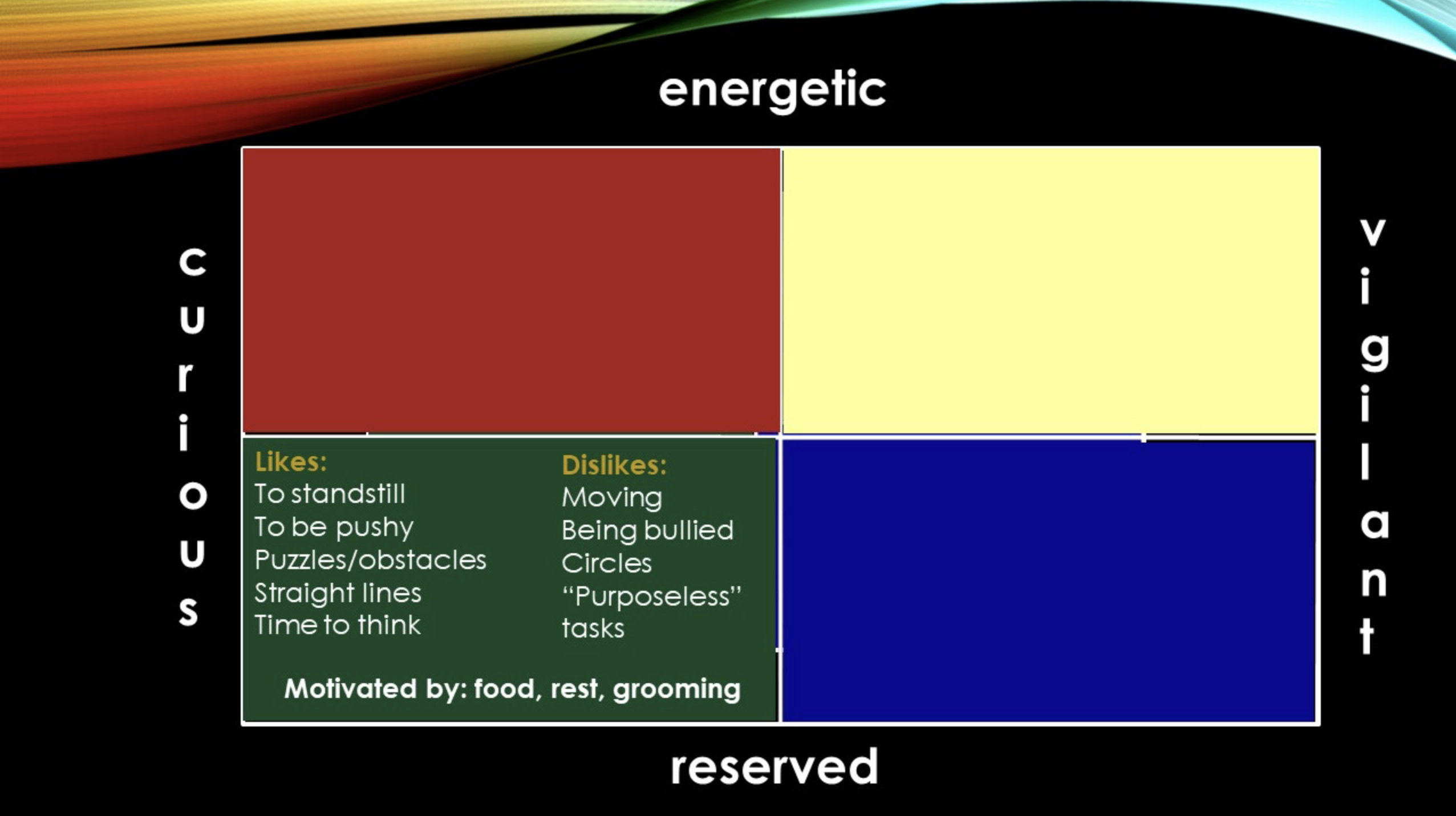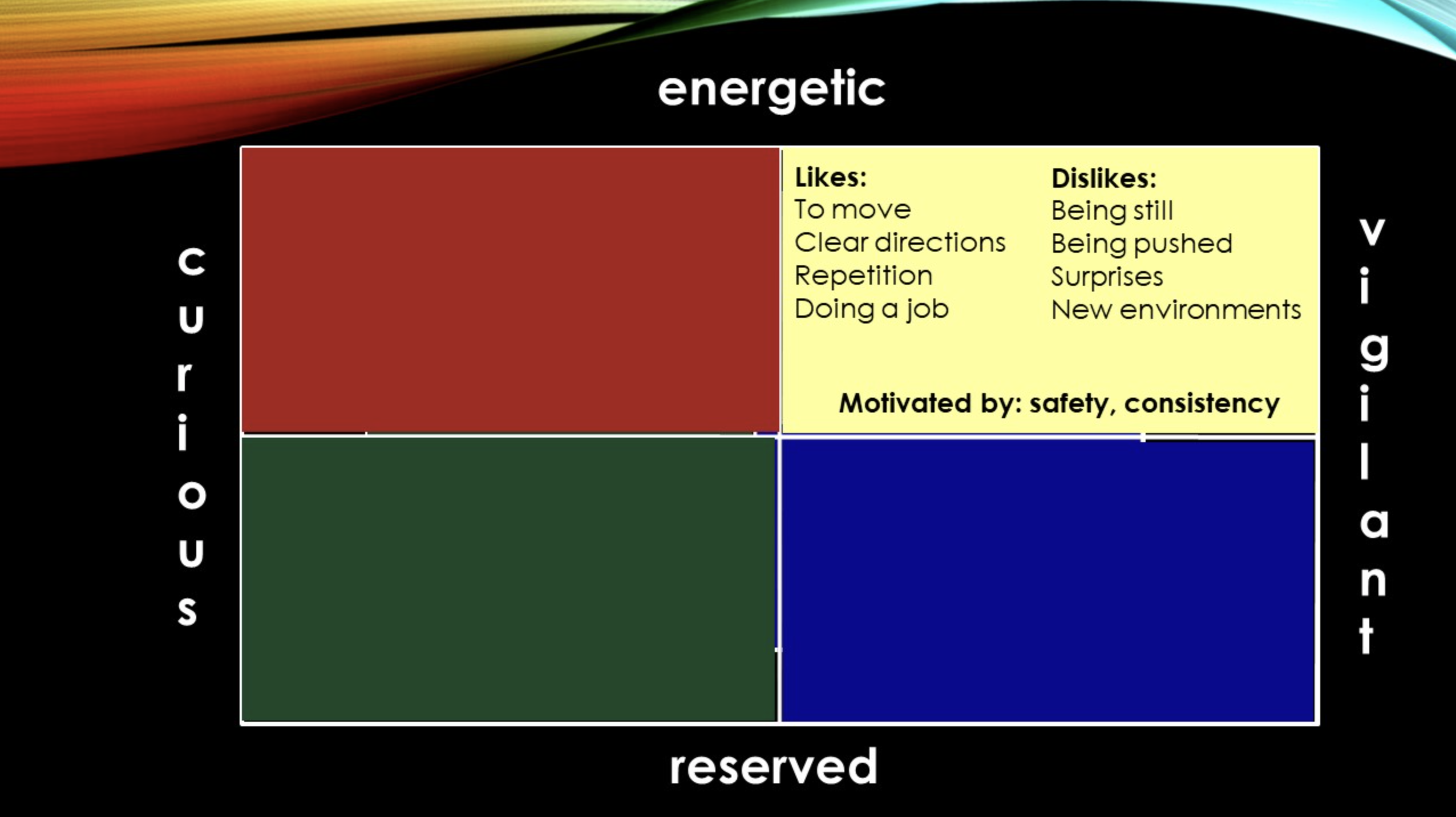

Through the techniques of relationship based horsemanship, delve into the mind of the horse from conception through old age. On the HAAP farm,
we focus on getting the most out of horse human relationships, all the while maintaining the dignity of our horses.

It would be difficult today to discuss training horses without mentioning horses personalities, often referred to as Horseanality (as coined by Pat and Linda Parelli). It's clear that using personality mapping can
make us all better horsemen.
Meeting horses is much like meeting people. I feel my way around a horse, and they feel their way around me. It is possible to take a lot of the confusion out of that process.
For me, the first determination I want to make regarding a horse is her personality. Every interaction I have with her will flow from her observed behaviors. If I can anticipate them, I can be much more appropriate,
effective, and efficient in my training strategies.
Each horse has a personality more suited to some jobs than others. This doesn't mean a horse can't do a particular job. It may mean it will be easier or harder for them based on their personality traits. If I know I
have a curious/reserved horse, asking them to be an eventer might be a bigger challenge to achieve. Alternately, asking them to be a competitive trail horse might be right in their wheelhouse.
This understanding combined with my level of skill and drive might determine how much time it will take to accomplish the goal and how successful we will be. If I can match a horse's personality to the job, I might
save myself a lot of time and frustration.
Words are important and how we perceive/define words will shape our actions. Humans can be put off by descriptors that don't quite feel right. None of us like to be pigeon-holed into a definition that seems off for us
as individuals.
This subject can be very complicated, or made to seem complicated, but I like to try to keep it as simple as possible.
With all of this in mind, I've come to some new descriptors that I hope you will find more understandable AND acceptable to you and your horses.
I've also borrowed the color system of personality testing trademarked by the Personalysis company. Each quadrant has it's own color based on surveys of people who exhibit that quadrant's personality markers. I've combined
them for horses into this chart:
Energetic: Possessing or exhibiting energy, esp. in abundance; vigorous; active.
Reserved: Given to or marked by self-restraint and reticence (inclined to keep one's thoughts and feelings to oneself)
Curious: Eager to learn more, inquisitive
Vigilant: Keenly alert to or heedful of trouble or danger, as while others are sleeping or unconcerned
Green: Curious Reserved
Red: Curious Energetic
Yellow: Vigilant Energetic
Blue: Vigilant Reserved
It's not wise to define horses (or people) to any one quadrant. Most horses and people will have a predominant and a secondary quadrant from where you can discern their dominant and influencing behaviors. This is illustrated
by the lines connecting quadrants in the graph above.
red(influencer traits)/yellow(dominant traits) or yellow(influencer traits)/red(dominant traits)
red/green or green/red
green/blue or blue/green
blue/yellow or yellow/blue
blue/red or red/blue
green/yellow or yellow/green
The most centered horses can have natural traits from every quadrant, but in my experience, this is rare. If you find such a horse, she's likely to be one in a million.
Keep in mind, a horse's personality/behaviors can change given the circumstances. This is related to levels of stressed perceived. A curious horse can become a vigilant horse in the blink of an eye. When people wonder
why horses don't perform the same in different circumstances, this is why.
To give you information to ponder and focus on before my next article, here are some traits you will find in each quadrant. My goal here is to help open the door to studying personality as a means to better horsemanship.
If you want more exhaustive information, follow the links I've provided above to Horseanality and Personalysis.

Curious/Energetic (Red) horses love puzzles and/or new environments. They like to move. If you don't satisfy these traits, you may have a very under motivated or fractious horse on your hands. They get blamed for being
naughty, but it's not the horse's problem that you or I slow them down and/or are boing.

Curious/Reserved (Green) horses like to move slowly, or not at all, especially when they need time to think. They like puzzles and challenges as long you don't bully them into things. If you do, they can become very uncooperative. Again, you have to make life interesting for them, but at a slower pace than a Red horse.

Vigilant/Energetic horses love to move their feet. They often can't relax or think until they do. If you block their ability to move, they can get very unhappy. They are keenly aware of potential danger, but are likely to be brave around brave horses and people.They love consistency and cooperation.

Vigilant/Reserved horses have a heightened awareness to danger. They need to be able to trust and/or feel comforted by their humans. They also love to please. It's important to them to be understood and feel they are doing things right. If you put too much pressure on too fast, they can have explosive reactions.
Do you see some of yourself in these graphs? Can you see how you and your horse might have compatibilities/conflicts based on your individual needs and traits?
The better we know our horses, the better we know ourselves and those around us. When you realize why horses and people behave the way they do, your relationships can become stronger through understanding and empathy.
In my next article, I will take one simple task and talk about how it's different for each horse based on their quadrant behaviors and expectations. I will also touch on the more negative traits found in each quadrant and how
you can minimize those behaviors.
Home | Purebred Mares | Half-Arab Mares | Purebred Stallions | Half-Arab Stallions | Purebred Geldings | Half-Arab Geldings